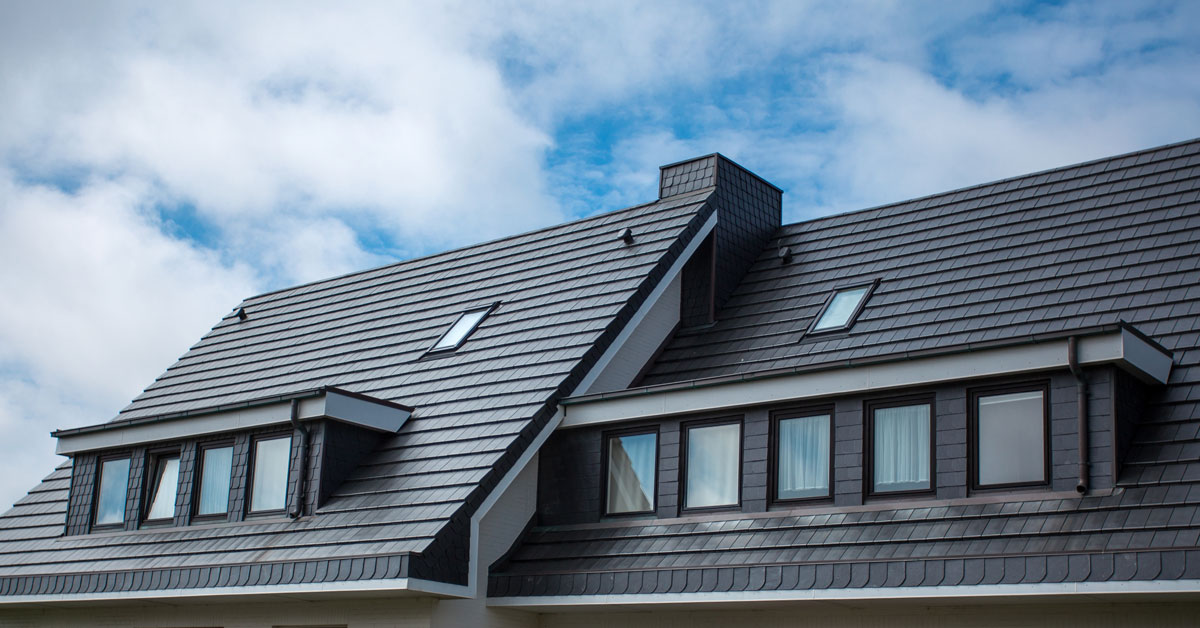Evaluating the Providers Supplied by Roofing Companies in Gainesville Florida
Evaluating the Providers Supplied by Roofing Companies in Gainesville Florida
Blog Article
Finest Practices for Ensuring Proper Roofing Ventilation
Guaranteeing correct roofing ventilation is important for the durability and efficiency of a roof. A well balanced consumption and exhaust vent ratio, frequently 1:300, plays a pivotal function, with intake vents ideally put at the lower side of the roof for trendy air entry and exhaust vents at the top for cozy air exit. Regular examinations to identify clogs and keep clear air flow are extremely important. Moreover, keeping insulation away from vents is important to avoid air movement constraint. Understanding these fundamental aspects sets the stage for even more thorough insights right into installment and maintenance techniques that can significantly boost your roof's efficiency.
Understand Air Flow Basics
Appropriately comprehending air flow fundamentals is vital for ensuring the longevity and performance of roofing systems. Effective air flow minimizes wetness accumulation and temperature level extremes in the attic, both of which can result in considerable structural damage over time. A well-ventilated roof covering assists in stopping usual concerns such as mold development, wood rot, and ice dams, which can compromise the honesty of the roof covering materials and the underlying frameworks.
The key goal of ventilation is to promote the motion of air, enabling for a consistent exchange in between the interior and outdoor environments. This equilibrium is accomplished via a combination of intake and exhaust vents that interact to preserve optimum air movement. Intake vents, typically situated along the eaves or soffits, permit fresh air to get in the attic area, while exhaust vents, often situated at or near the roof ridge, make it possible for hot, moist air to leave.
Trick variables affecting the performance of roof ventilation consist of proper positioning, adequate sizing, and making certain that both consumption and exhaust vents are unobstructed. Routine inspection and maintenance are vital to determine possible clogs, damages, or ineffectiveness in the air flow system, consequently securing the roofing's performance and toughness.
Sorts Of Roof Vents
Roofing vents play a vital duty in keeping efficient attic air flow and, by extension, the overall wellness of the roof system. Numerous types of roofing system vents are offered, each with distinct advantages tailored to particular roof requirements.

Soffit vents are mounted under the eaves and job in tandem with roof covering vents to guarantee a well balanced consumption and exhaust system. By allowing cooler air to get in from below, soffit vents help with the expulsion of hot air with upper vents. Gable vents, located on the exterior wall surfaces of the attic, offer another reliable solution, particularly in homes with saddleback roofs.
Evaluate Your Present Air Flow

Following, consider the age and problem of your roof materials and air flow components. Older systems may not follow current he has a good point building codes or might have degraded in time, decreasing their effectiveness. Conduct a thorough assessment to identify any type of indications of wear and tear, such as rust, damages, or spaces that could endanger the system's efficiency.
Furthermore, determine the attic room temperature and humidity degrees. High temperatures and humidity can suggest poor ventilation.
Setup Best Practices
Efficient setup of roof covering ventilation systems is vital for making sure optimal performance and durability. Proper installment starts with comprehending the certain air flow requirements of the building and the roof it covers. This involves determining the proper proportion of consumption to wear down vents, normally adhering to the 1:300 policy, which stipulates one square foot of air flow for every single 300 square feet of attic floor room.

The placement of vents is just as essential. Consumption vents need to be installed at the roof covering's lower edge, often in the soffits, to enable amazing air to go into. Exhaust vents, on the other hand, must be mounted near or at the roof covering's height to facilitate the leave of warm, wet air. This produces an all-natural airflow that assists keep temperature and wetness balance within the attic area.
Seal all air vent connections meticulously to avoid air leaks and possible water infiltration. Usage top notch materials and comply with manufacturer standards to ensure longevity and effectiveness. In addition, integrating ridge vents with baffles can considerably improve air flow effectiveness by avoiding wind-driven rainfall and snow from going into the attic.
Eventually, exact installment of roof covering ventilation systems minimizes potential issues such as mold and mildew growth, ice dams, and architectural damages, ensuring the roof's integrity and the building's total health and wellness.
Routine Upkeep Tips
Consistency in upkeep techniques is basic to guaranteeing the lasting efficiency of roofing ventilation systems. During these examinations, guarantee that vents are cost-free of debris, nests, and various other blockages that might hinder air movement.
Cleansing the vents is one more important job. Utilize a soft brush or visit this website a vacuum cleaner to get rid of dirt and particles from intake and exhaust vents. Be mindful not to damage the vent displays or louvers throughout the process. Furthermore, examine the attic room for any kind of signs of water damage, which can endanger the stability of the roofing system.
Appropriate insulation is similarly vital. Make sure that attic room insulation does not block the vents, as this can badly restrict air flow. If any kind of insulation has actually changed or cleared up, rearrange or replace it to maintain an effective obstacle.
Finally, change any type of harmed or missing elements without delay. Busted vents, split tiles, or tatty blinking can all contribute to inadequate air flow and should be resolved without delay. Normal maintenance guarantees that the roofing ventilation system functions ideally, therefore extending the life expectancy of the roofing system itself.
Final Thought
Ensuring appropriate roof covering ventilation is paramount for maintaining the performance and resilience of a roof. Adherence to the 1:300 consumption and exhaust air vent ratio, combined with the strategic placement of vents, is essential. Regular semiannual inspections, debris cleaning, and guaranteeing insulation does not obstruct airflow are critical practices. Carrying out these best techniques will foster a well-ventilated roofing system, thereby minimizing possible issues associated with moisture buildup and extreme warmth, eventually extending the roof covering's life expectancy.
A well balanced consumption and exhaust air vent proportion, typically 1:300, plays a crucial function, with intake vents preferably put at the reduced edge of the roofing system for great air entry and exhaust vents at the peak for warm air departure. Consumption vents, commonly located along the soffits or eaves, allow fresh air to go into the attic room area, while exhaust vents, frequently located at or near the roof ridge, enable warm, moist air to run away.
Soffit vents are mounted under the eaves and work in tandem with roofing system vents to make certain a balanced consumption and exhaust system. By permitting cooler air to get in from below, soffit vents promote the expulsion of warm air via top Click Here vents. Adherence to the 1:300 consumption and exhaust air vent ratio, combined with the calculated positioning of vents, is vital.
Report this page